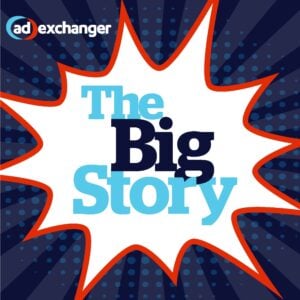 “On TV And Video” is a column exploring opportunities and challenges in advanced TV and video.
“On TV And Video” is a column exploring opportunities and challenges in advanced TV and video.
Today’s column by Steven Golus, founder at Steven Golus Consulting, is the second in a series that will present the fundamentals of how TV advertising works and how it is changing.
In our previous article, we discussed pre-upfront presentation activities – how marketers and agencies think about budgeting and goals and how networks formulate their upfront strategy, pricing and yield management. In this column, we will focus on what happens between the upfront agency presentations until the upfront season is closed.
The standard upfront process is going through a transition this year. Given the COVID-19 uncertainty and the movement of consumers and dollars to OTT, the conventional broadcast calendar planning cycle is in question.
And if you think about it, the idea of the upfront is antiquated. The original intent of the upfront was to help automotive manufacturers promote new car models. With the changes in consumer viewing habits and the fragmentation of the video buying marketplace, this process seems ripe for change.
The biggest change being advocated is moving from a broadcast year, which runs from the fourth quarter to Q3 of the following year, to a calendar year to align with other budgeting cycles and allow for more stability during the pandemic. The article will largely focus on the traditional upfront calendar.
Agency presentations
Starting in March or April, a few months before the broadcast networks’ upfront presentations and events in mid-May, networks meet with agency partners to discuss rating highlights from the prior year (for example, last year, we were the No. 1 cable network for adults 18 to 49 years old) and the slate of new fall programming. Typically, network teams meet with each client team at the agency and tailor the pitch to their needs. But there are some large buying groups that no longer allow team-by-team presentations, and they ask instead that the networks meet with the entire buying group.
These agency presentations are essential, so that buying teams can get a sense of the schedule’s strength and how they expect the programming to rate. And the networks want to create buzz around new programming and use this as a negotiation lever for the rate of change, which is the season-over-season increase in CPM.
One item on the minds of buyers and sellers alike is liability. Unlike digital, which bills on delivery of impressions, TV advertisers will typically pay the committed amount regardless of GRP delivery. So if a network under-delivers, they are committed to making good on the difference in GRPs, essentially running additional ad units until the goal is reached. Liability is why programming research and pricing and inventory are critical because under-delivery has a ripple effect on future inventory availability, since inventory used for make-goods can no longer be sold. On the flip side, brands want to hit their projected GRPs because under-delivery in a particular spot or flight may impact business outcomes.
Upfront themes
Every year, there is typically a theme for the upfronts – a special ask from the buying community.
This year there is much talk about flexibility. A certain percentage of the buy is cancelable more than 60 days before the start of the quarter in a typical broadcast calendar year. In past years, on average, 70% of budgets were firm, and 30% were cancelable. Since the upfront season typically ends in mid-July, not long before the start of Q4, Q4 budgets are 100% firm, with each subsequent quarter allowing for a higher percentage of allowable cancellation.
This year, buyers are asking for a smaller cancellation window, in many cases 30 days, and for a lower percentage of the buy to be firm. Interestingly enough, from what I hear, smaller players such as Roku are offering 100% flexibility to steal share from the networks. Smart move.
Upfront events
It’s typical for cable networks to hold their upfront events before the broadcast networks, which traditionally threw larger glitzy events. In the past, for example, ABC held upfront presentations at Lincoln Center that were hosted by Jimmy Kimmel, who would introduce talent, talk about new shows and show clips. The upfront presentations are often followed by parties at venues such as Tavern On The Green or Wollman Rink in Central Park.
But why do these events take place? By the time of the upfront events, most buyers have a good idea of what programming they want to buy in the coming year. The events are mostly for agency clients, namely advertisers. It allows them to interact with the networks, learn more about programming and, if they are lucky, catch a photo with talent.
As the upfront events are taking place, networks are plotting their negotiating strategies. Typically those with limited but valuable inventory – usually the broadcast networks – will break first by proposing higher rates, as it signals scarcity and urgency for buyers to react. It’s not uncommon to see NBC move (propose a rate of change to a buying group) first, with sports and kids programming (such as Nickelodeon or Cartoon Network) following. And while cable typically moves after broadcast, in recent years, cable has been creeping up. For example, in the past few years, the Turner offering has gained strength, and as such, they’ve moved sooner.
One of the other items networks and agencies need to consider is scatter. Scatter is inventory sold closer to the quarter in which a program airs. Networks will usually sell most of their inventory during the upfront but save some for scatter. Typically it’s a 70/30 split. But it’s a bet on behalf of the network: They hold back inventory in hopes for a tight scatter market where inventory can be sold at a higher rate. Not surprisingly, given the current environment, the Q2 broadcast scatter market was incredibly weak, with average unit rates approaching the lower upfront rates.
Other items negotiated during the upfront may include fluidity, the ability for networks to deliver units across either linear or digital marketing programs, such as a Sundance sponsorship sold by AMC or inclusion in other tentpole or special events.
Once the senior portal teams from the holding companies have agreed on a rate of change, which typically happens in July, planners at the agency will put together specs. Specs are a spreadsheet containing quarterly budgets and anticipated flighting for when the advertiser would like its ad spots aired. The network will then return with an anticipated schedule, including the programs during which the advertiser will run, and expected GRPs for each spot. Once this is completed, networks are ready to air their first TV ad spots during the new fall season.
In our next article, we will explore multichannel video programming distributors, how they partner with the networks and what that means for local, regional and addressable inventory.













